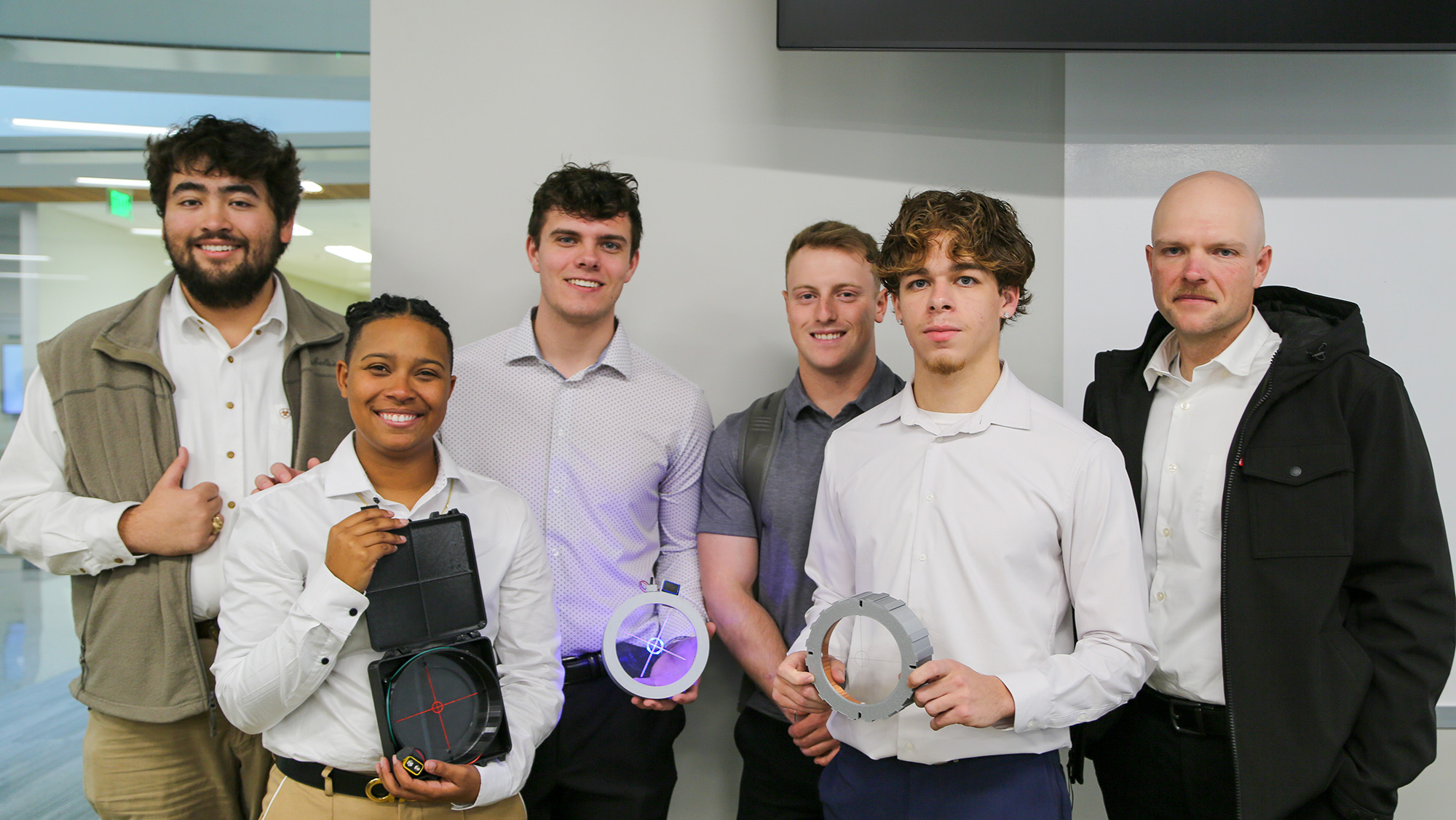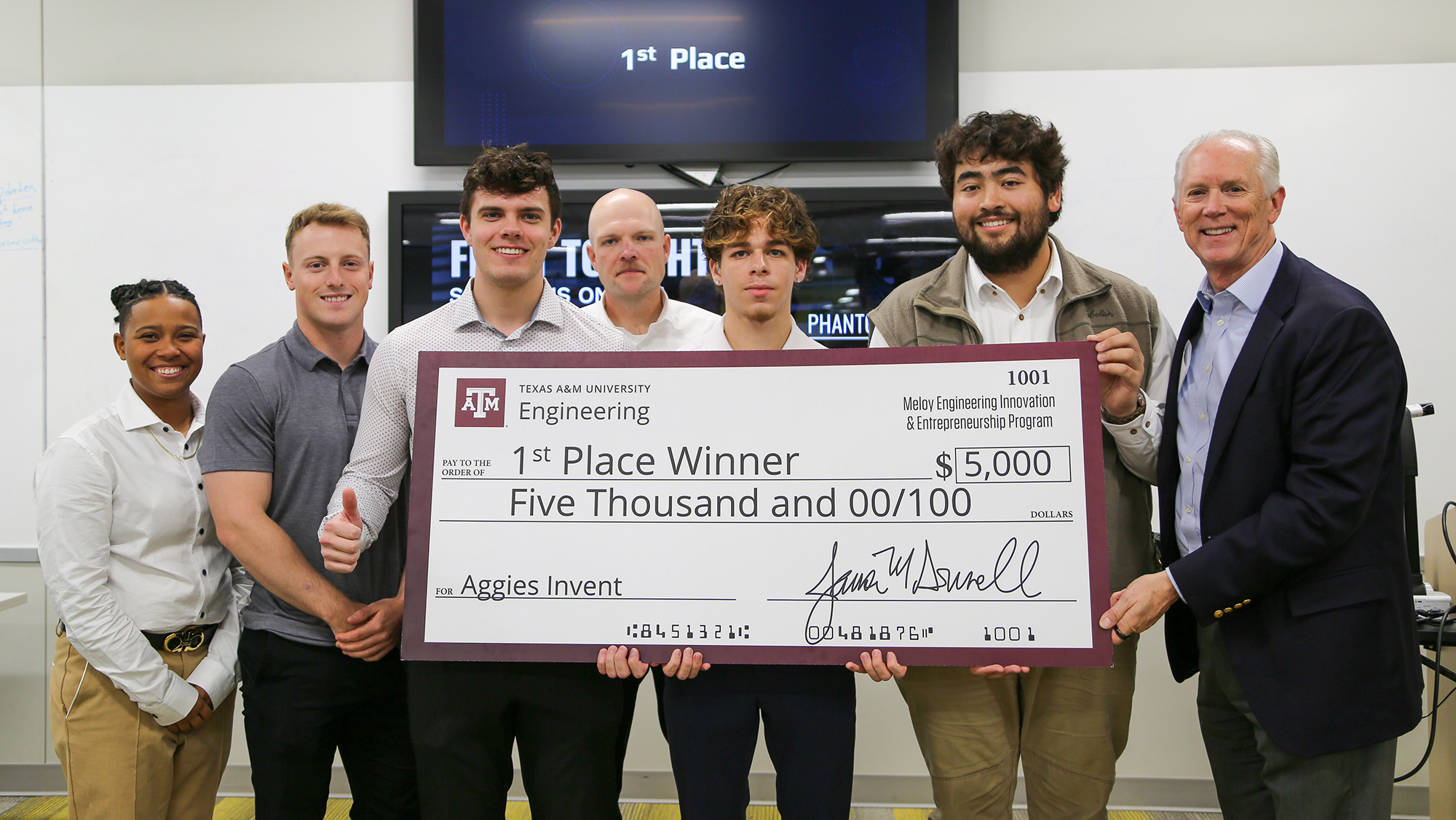
Hosted by Texas A&M University’s College of Engineering entrepreneurship program, Phantom Invent brought together 48 participants for an intensive three-day challenge to solve some of III Armored Corps’ most challenging operational problems.
Composed of equal parts soldiers and students, the event blended the tactical adaptability of active-duty personnel with the methodical problem-solving approach of engineers. Students conducted ongoing customer discovery interviews with their soldier teammates and Corps leadership, gaining firsthand insights from those who would implement their solutions in the field. This competitive team-oriented structure fostered a deep level of collaboration, with a heavy emphasis on user experience.
Through promotional videos, cost analyses, prototype displays and thorough explanations, each team pitched their innovations to high-level leadership.
Guided by six need statements from III Corps, three core priorities emerged: saving time, conserving resources and protecting lives. Team Qwiksight demonstrated a clear understanding of these objectives with a prototype that addressed all three, earning them the first-place title along with peer-voted honors for “Most Feasible Solution” and “Best Prototype.”
Qwiksight’s innovation is a compact and cost-effective alternative to the traditional Muzzle Boresight Device (MBD), addressing several critical issues with the current system. Unlike the bulky, $3,000 MBD–which requires a total of 92 steps, 22 minutes and leaves the loader exposed in front of the tank–the new device streamlines the process, reducing time and steps by 50%. Lightweight and compact in a book-sized carrying case, the prototype is made from heat-resistant thermoplastic, laser-etched acrylic and an interchangeable LED ring, making it usable at night and universally compatible with all tanks.
“Qwiksight is essentially a cap that you place over the end of a tank barrel which has a laser-etched reticle in the middle to find the true center,” explained a team member during their 10-minute final presentation. “Then, after removing the firing pin from the rear of the gun, you look down the barrel and find exactly where it’s pointing, thus boresighting your device.”
The design eliminates the need for specialized tools, allows firing through the device in emergencies and can be manufactured for under $50. Additionally, it is incredibly simple to produce—units with access to a 3D printer and basic materials could fabricate replacements in just two hours, ensuring accessibility and reducing downtime.

Sergeant First Class Desjaunae Williams, a member of the winning team, reflected on the collaboration between soldiers and engineers.
“They were incredibly curious, constantly seeking to solve any problems they could think of. The more we explained, the more their minds were energized. The challenges we face often require non-traditional solutions. This experience taught me that sometimes the best solution is not the most obvious one, and that finding a viable approach can require a combination of persistence, adaptation and flexibility.”
Following the presentations, the judges expressed their appreciation for the quality of innovations showcased during the competition, highlighting the exceptional coordination between team members as a key factor in the success of the designs.
“You all did an awesome job,” noted Colonel Ball. “If you’re a soldier, you know you don’t do anything on your own. For engineering students, almost every class you take, you’re working on a team. That's the biggest thing I take away from this event- everyone works as a team. It was a fully integrated group of soldiers and students.”
The event concluded with an awards ceremony recognizing the top teams. Team P.H.A.S.E. earned second place for their personnel camouflage device designed to evade thermal detection, while Masked Mobilizers took third with their modular system for camouflaging Tactical Command Posts. All participants received a commemorative Phantom Invent Challenge Coin presented by the unit commanders in recognition of their dedication and hard work throughout the competition.
Judge Colonel Bradley expounded on the broader impact of events like Phantom Invent, emphasizing their value for both the participants and the nation’s future.
“The partnership between III Armored Corps and the entrepreneurship program within Texas A&M Engineering is exceptional; it is a benchmark I hope other units see and take advantage of. Every opportunity we get to make our future better is through partnerships with the military and corporate world.”